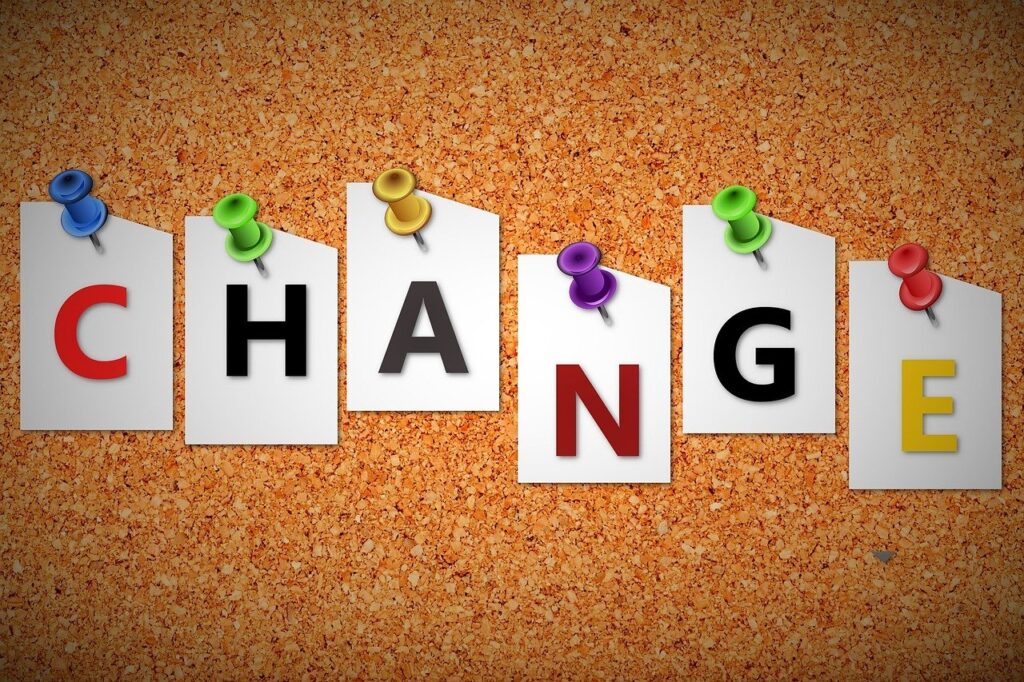
Can people change?
Can people change? Yes! Do people change? Not much. This is one of my favorite quotes from the folks at Hogan Assessments. For some, this quote makes a lot of sense when it comes to leadership. Some leaders seem to be born to be great leaders. They naturally possess the thought, people, results, and “self” leadership that make them effective, throughout their careers. And others, no matter what happens, seem destined to be the “bad boss” of other’s nightmares.
In another way, this sentiment seems to fly against the whole purpose of leadership coaching. After all, if leaders (like all people) don’t change much, why bother coaching them at all?
For me, the truth about this statement has a bit of nuance to it. The truth is that I see folks grow and develop all the time. I see leaders who have the courage to seek out other’s perceptions of them and examine them seriously to see what they can learn. Sometimes, the feedback can feel unfair or “off”, but they don’t dismiss it. These folks accept the “sting” that they may be imperfect and that, despite their best intentions, they miss the mark as leaders. Then, they do the hard work of managing those “imperfections”. But the changes don’t happen quickly and it is a journey of fits and starts.
What change really looks like is this:
- Leaders choose to HEAR and UNDERSTAND HOW and WHY they are perceived by others. They come to recognize, regardless of intent, they “land on others” in ways that are confusing, hurtful, disrespectful or ineffective.
- Then, they CARE about it. They don’t WANT to be perceived that way anymore. They own the impact and commit to being better.
- They become aware of the triggers to those behaviors and come to anticipate the situations when they are likely to “step in it”.
- They create strategies and practice new behaviors, before the situation arises in real time. And, they figure out strategies continue being aware and learning how to manage their responses.
- These leaders then learn to recognize –in the moment–the internal signs that their “instincts” are kicking in and their habitual response may be imminent.
- Then, they pause, take a deep breath and choose a new response.
- Of course, they sometimes still “step in it”. They react ineffectively in spite of their effort, practice, and intention. But, they “fix” it after the fact. In fact, they call a do-over, really, they do.
- Over time (months?) the lag time between stepping in it and “fixing it” becomes shorter and shorter. And finally….
- They develop a new habit that avoids their “previously derailment” entirely.
THIS is growth and development. This is the change that is realistic. Behaviors—that are more effective and leaderlike–can be learned and demonstrated.
What is also true is this is easier for some than others. For some, their natural personality strengths make it easier for them to move through this process of change. For others, it frankly may not be worth the work. What I know is these individuals still have great signature strengths they can bring to their organizations. It just may not the role of leader or perhaps they are simply in the wrong organization.
I love to help individuals understand the signature strengths they are “born to”. And I love to help them forgive themselves for where they miss the mark. And I love to work with all leaders to become even better than they are, bringing the best of themselves to their organizations. I’d be glad to help you figure that out too. If you’ve already figured it out, but still “step in it” sometimes, I’d like to talk with you too! Just give us a call or send me an email.



